A trip to Japan reveals just how amazing Grand Seiko watches are
Take a 1000-kilometre journey into the complicated world of Japan's most complicated, luxurious watches.

Few watchmakers have achieved so much in such a short amount of time as Grand Seiko. It’s easy to forget that the brand only launched outside of its native Japan just over 13 years ago – but in that time, it’s amassed a cult following and reputation that’s unlike anything else in the watch industry.
Yet there are still plenty of misconceptions about Grand Seiko among even seasoned watch lovers. Even saying the name of the brand can confuse people: ‘Grand’ Seiko? What makes them different from normal Seikos? Are they made in the same factory?
Well, they are – but the answer’s not that simple.
To understand Grand Seiko, one must first understand the history of Seiko itself, as well as the two different factories that produce Grand Seiko watches – and that’s the opportunity I got earlier this year during a week-long trip to Japan with Grand Seiko.
This article was originally published on dmarge.com.
Two factories, one pursuit of excellence
One of the paradoxes about the luxury watch industry is that for as much as we – watch fans, brands and journalists – all crap on about craftsmanship, most luxury watch brands are pretty tight-lipped about the actual production process that creates these things we obsess so much over.
That’s for good reason: with the exception of only a few true manufactures (i.e. brands that do everything in-house) such as Rolex or Jaeger-LeCoultre, most watch brands make watch components and assemble watches in a number of different locations, and/or rely on a network of suppliers to create their watches.
Of course, there’s nothing wrong with that, but watch brands like to at least keep up the illusion that there’s one single factory somewhere where a wizened master watchmaker is painstakingly putting together your watch, even if that rarely occurs in modern watchmaking.
However, Grand Seiko is different. Grand Seiko is quite open about the fact that there are two very different factories that produce their watches: the Grand Seiko Studio Shizukuishi in Iwate, one of the northernmost prefectures of Honshu; and the Shinshu Watch Studio in Nagano in central Japan.
The former produces Grand Seiko’s mechanical timepieces and is effectively an annex of the much larger Morioka Seiko Instruments Inc., the main factory for Seiko’s mechanical watches (which confusingly also produces many of Seiko’s quartz watches).
The latter produces quartz and Spring Drive watches, and they’re located on totally different ends of the country. It’s all a bit intimidating but bear with me.
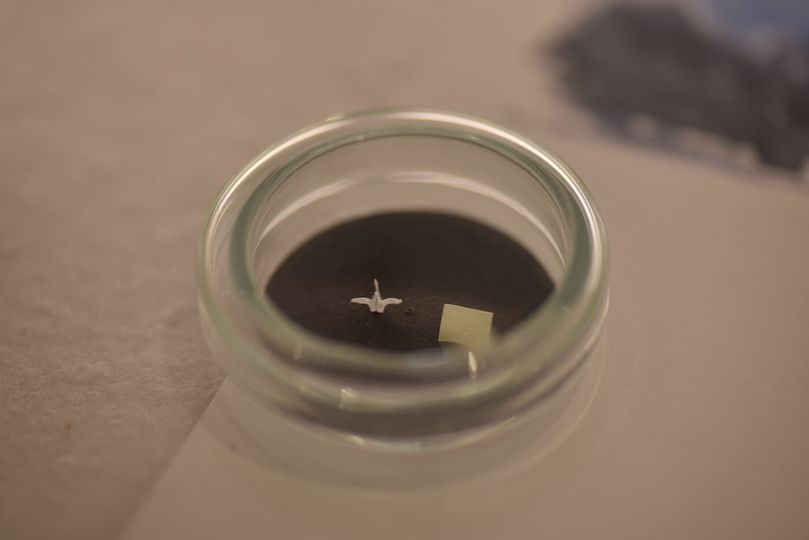
While they both produce wildly different movement technologies, they both share a unified Grand Seiko style. For instance, the super-popular ‘White Birch’ – which comes in both high-beat mechanical and Spring Drive flavours – fundamentally looks the same regardless of which of the two factories it comes from (although I’m told the mechanical version has a slightly more detailed dial).
Indeed, there’s a robust sense of internal competition and rivalry between the Shizukuishi and Shinshu factories, with both trying to outdo the other, informed by the fact that they were originally two separate businesses.
That comes to the first reason why Grand Seiko is so special: that intense internal competition, knowledge-sharing and specialisation between Grand Seiko’s two factories helps Grand Seiko produce some of the most exacting and meticulous luxury watches on the planet.
It’s a dynamic that even I, as a Grand Seiko fan, didn't truly appreciate until I’d visited both factories for myself – and while this all seems a little abstract and corporate, it’s serious business.
Vincent Cuche, Head of Grand Seiko ANZ and our guide for our week in Japan mentioned to me at the start of the trip that he’s careful to wear a different type of Grand Seiko to the different factories: a mechanical movement model to Shizukuishi and a Spring Drive model to Shinshu, so he doesn’t put anyone’s noses out of joint.
Grand Seiko versus the world
It’s not just the crucible of internal competition that’s forged Grand Seiko’s brilliance, though. It’s also Seiko’s – and Japan’s more broadly – desire to challenge the status quo and make watches better than any other country.
It’s a comparison that’s been pretty well-worn at this stage, but Grand Seiko is to Seiko what Lexus is to Toyota. Both are luxury imprints of more mainstream, affordable brands – the biggest brands in their respective fields – that demonstrate what those brands can do when they want to do things ‘properly’ (not that either Seikos or Toyotas are by any means not ‘proper’).
Early Grand Seiko models, as well as an example of the Neuchatel Observatory Chronometre Trial movement at the Grand Seiko Studio Shizukuishi museum.
Both Grand Seiko and Lexus also have a bit of a ‘challenger’ reputation. Back in the late 80s, Toyota launched Lexus to prove that they could make a luxury car just as good if not better than the Americans or Europeans – and they succeeded.
These days, Lexuses are a common sight on the streets of Germany and the US, for instance – the same cannot be said about Cadillacs in Japan.
That same ‘mission’ informs Grand Seiko’s genesis. In 1960, when the first Grand Seiko was released, Japanese watches were seen as inferior to Swiss watches.
Grand Seiko was meant to change that perception, as well as realise Seiko founder Kintaro Hattori’s dream of creating the “ideal watch”: a watch that wasn’t just luxurious but precise, legible, durable, beautiful and that could be worn every day.
The apocryphal story Seiko tells that encapsulates the brand’s struggle for recognition is that in 1968, Seiko famously won second prize at the Neuchatel Observatory Chronometre Trials – something that shocked the Swiss.
That competition was mysteriously and indefinitely postponed the very next year. It doesn’t take a genius to put two and two together: the Swiss were embarrassed that a foreign brand, an Asian brand no less, did so well.
Credit where credit’s due
Fast forward to 2023, and Grand Seiko is rightfully acknowledged as one of the world’s leading luxury watch brands – and just as Germany is home to Lexus dealerships, there are heaps of Grand Seiko boutiques throughout Europe.
There’s even one in Switzerland – and one only has to look at the number of Seikos and Grand Seikos on the wrists of Swiss attendees at Watches & Wonders Geneva to know that this is a battle the Japanese have won.
The problem with the automotive analogy is that it’s not only a bit tired (and smacks of a sort of convenient prejudice) but it also sells Grand Seiko a bit short. Seiko makes great watches and Toyota makes great cars, but the gulf between Grand Seiko and Seiko is vast – much vaster than the gap between Toyota and Lexus.
Hell, the gulf between Grand Seiko and much of the established European luxury watch industry is vast. The finishing, movement and aesthetics of a $10,000 Grand Seiko totally embarrass any equivalent (or any $50,000 watch, for that matter) from the vast majority of Swiss brands.
Yet Grand Seiko watches are also quintessentially Japanese. They haven’t lost sight of what makes the Japanese approach to art and luxury so different; so special. They’re not just ‘as good’ or ‘better’ than their European contemporaries, they offer a fundamentally different experience and conception of watchmaking.
Part of that Japanese approach is how Grand Seiko has taken watchmaking techniques invented elsewhere and perfected them while making them uniquely Japanese. The best example of this is Grand Seiko’s legendary Zaratsu distortion-free mirror polishing.
A watchmaker prints watch dials at the Shinshu Watch Studio. Unlike most watch brands, Grand Seiko uses gelatin setting pads to apply text to dials, not silicon, as they claim it produces a warmer print. This also means that Grand Seikos are not vegan…
Neither Grand Seiko nor the Japanese invented mirror polishing. ‘Zaratsu’ actually comes from the Japanese phonetic spelling of the German word ‘Sellaz’, the producers of the first polishing machines Seiko bought from the West. Distortion-free mirror polishing is also sometimes called black polishing, and it’s something many Swiss watchmakers do, too.
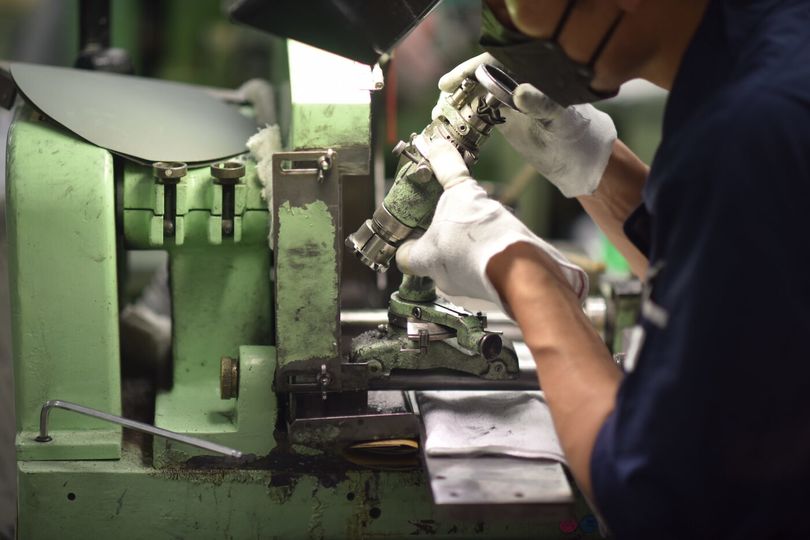
However, Grand Seiko does it more than any other watchmaker, on larger surfaces than other watchmakers, and has perfected the technique, making it a hallmark of their watchmaking.
The Spring Drive movement is something that both Seiko and Japan can confidently call their own… But would Seiko have even attempted to create such a groundbreaking movement if they didn’t have a point to prove? I’m not sure. But I’m glad it exists, and it too stands as a testament to Seiko’s all-encompassing drive to make the best watches in the world.
Watches and whisky?
Another Japanese analogy that might help you understand what makes Grand Seiko so special is to compare it to Suntory, Japan’s biggest liquor company (and I swear I’m not just saying this because I drank heaps of highballs in Japan).
Suntory makes many different types of food or drink but it’s best known in the West for its whisky, and rightfully so: not only are the brand’s many distilleries some of the world’s best, but Suntory literally founded the Japanese whisky industry. It’s also another example of the Japanese taking an innovation created somewhere else and becoming world leaders in it.
What’s interesting about the Japanese whisky industry and Suntory more specifically is how these different, often quite disparate distilleries operate.
Hakushu, Hibiki, Yamazaki… Each Suntory distillery calls very different regions of Japan their own, each has its own way of doing things and produces very distinctive whiskies that nevertheless are all Suntory whiskies and will often be blended together to produce new, even more unique whiskies.
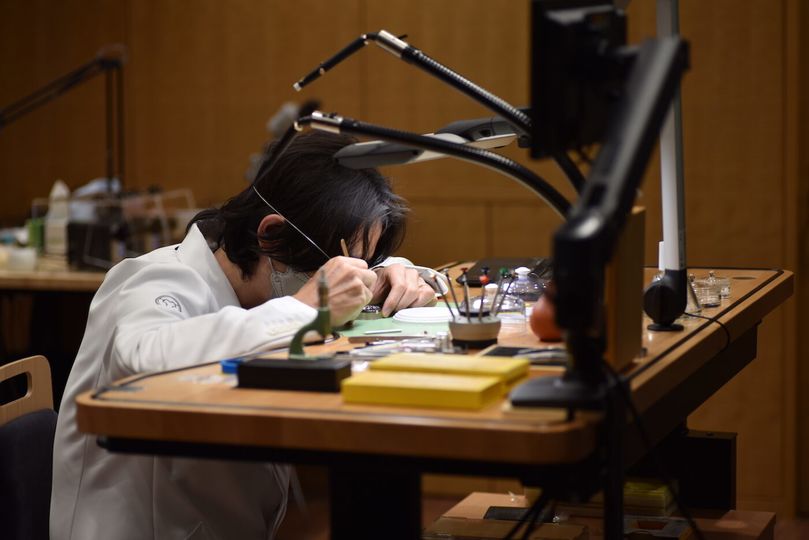
We talk about terroir when we discuss whisky or wine: how the unique aspects of a region indelibly influence the products made in them. It’s the same for Grand Seiko’s watches, too. The Grand Seiko Studio Shizukuishi is cool, alpine and surrounded by nature.
The factory itself is crafted from wood and feels serene; contemplative. In comparison, the Shinshu Watch Studio, a true vertically integrated manufacturer, is bright and high-tech. It’s sunnier in Nagano and there are more watercourses.
Newly opened is the Atelier Ginza, Grand Seiko’s dedicated high-complication studio, which is found on the top floor of the ritzy Wako department store in the heart of Tokyo’s most exclusive postcode.
It’s in these rarefied surrounds that Grand Seiko’s most special models are being created, such as the paradigm-shifting Kodo Constant-Force Tourbillon which Grand Seiko unveiled back in 2022. This new location, located in the neon-soaked heart of the biggest city in the world, adds a different character still to Grand Seiko’s watchmaking.
That is to say, when Grand Seiko talks about its watches being inspired by the peaks of Mt. Iwate, the depths of Lake Suwa or the bright lights of Ginza, it’s not just marketing guff.
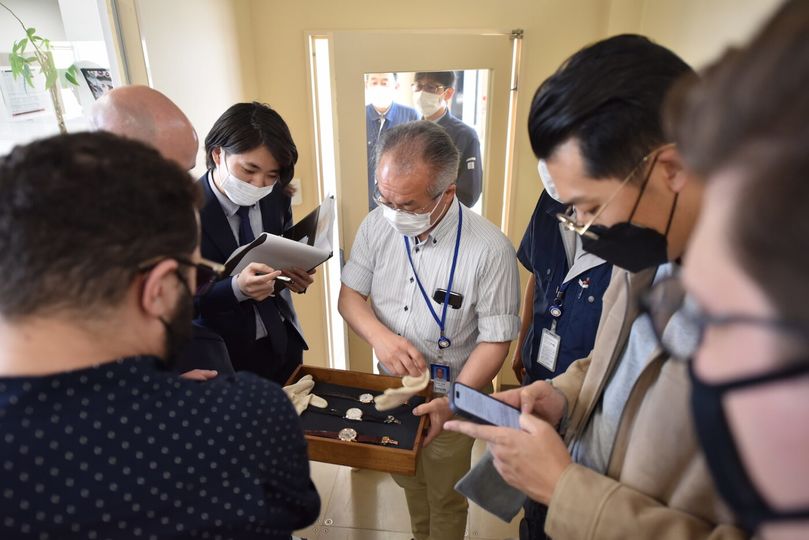
Just as a fine blended whisky takes the best of many different whiskies from many different regions to produce something that’s a perfect single expression of epicurean delight, Grand Seiko’s watches come from different parts of Japan but represent a united body of work.
That’s what makes Grand Seiko watches so special. These unique creations from the different ends of Japan, all influenced by the diverse surroundings and seasons of the country – united by a distinctly Japanese, uncompromising and refined approach to watchmaking – are the ultimate expression of Japanese art. In my humble opinion, at least.
The value proposition
We watch writers can’t help but frame things in terms of value for money, which is pretty dumb when you’re talking about luxury watches. To us, a $11,000 Grand Seiko White Birch represents amazing value, especially when compared to other watches in its category – but to the average, normal human, $11,000 is an absurd amount of money to spend on a watch.
The ‘value for money’ argument is one that unavoidably comes up when you talk about Grand Seiko, which is a shame because it cheapens the discussion somewhat. It’s a backhanded compliment: “this watch is great, especially for the money…” What a dirty phrase.
But it’s hard to get away from the fact that in an industry where grey market speculation and continuous price rises have made buying popular models from some of the world’s famous brands a grubby and ludicrously expensive exercise, Grand Seiko’s value proposition is second to none.
Maybe this is another way a Japanese sensibility informs Grand Seiko: unlike the famously mercantile Swiss, the Japanese are a bit more reluctant to fleece customers dry. Maybe that’s just me being cynical.
That said, I think a big part of Grand Seiko’s appeal is that their watches speak for themselves without knowing how much they cost. People wear Patek Philippe Calatravas only for people to complement their “nice Daniel Wellington”.
Beauty is subjective. But if you showed someone who didn’t know anything about watches and didn’t care about brands such as Daniel Wellington, a Grand Seiko White Birch and a Patek Philippe Calatrava, they’d all easily say the Grand Seiko was the most expensive one.
That character in itself is quite Japanese. They’re understated; somewhat conservative, but very clearly precious even at first glance.
Final thoughts
Whilst on the ground in Switzerland for Watches & Wonders Geneva earlier this year (actually only a few weeks before going to Japan) I had the chance to visit IWC Schaffhausen’s factory – or rather, their Manufakturzentrum.
Most of the Swiss watch industry is located in the Romandie, the French-speaking part of Switzerland, and IWC is one of only a handful of watchmakers in the German-speaking part of the country, on the other side of what the Swiss call the Röstigraben (literally, the “rösti ditch”): the cultural boundary between German and French Switzerland.
It was interesting to see how that difference in culture – Germanic versus French – influences the way IWC makes watches, and how it differs from French-Swiss watchmakers.
IWC’s factory is very Apple-like: ultra-modern, bright and super-efficient. It’s very different to the centuries-old workshops that dominate the Romandie.
But if the difference between French and Germanic watchmaking is noticeable, the difference between European and Japanese watchmaking is vast.
The Japanese simply have a dogged dedication to perfection and doing things their own way that few other cultures have, especially when it comes to watches, and extra-especially Grand Seiko watches. It’s a whole different world of watches.
If there’s one thing to take away from this long, emotional screed I’ve penned about Grand Seiko and Japanese watchmaking, it’s that what Grand Seiko is doing is particularly special.
There are no other watches on earth quite like them, and that’s why I – and countless watch lovers across the globe – are so besotted with them.
This article is published under license from DMARGE: the original article can be viewed here

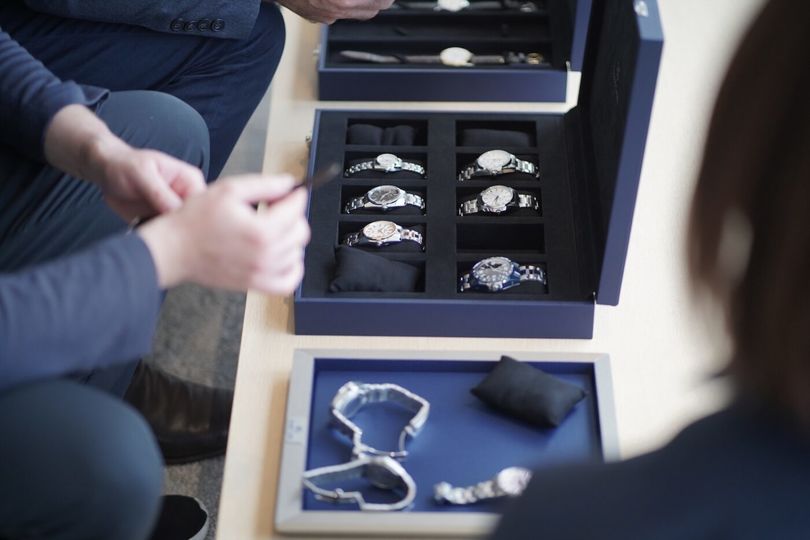
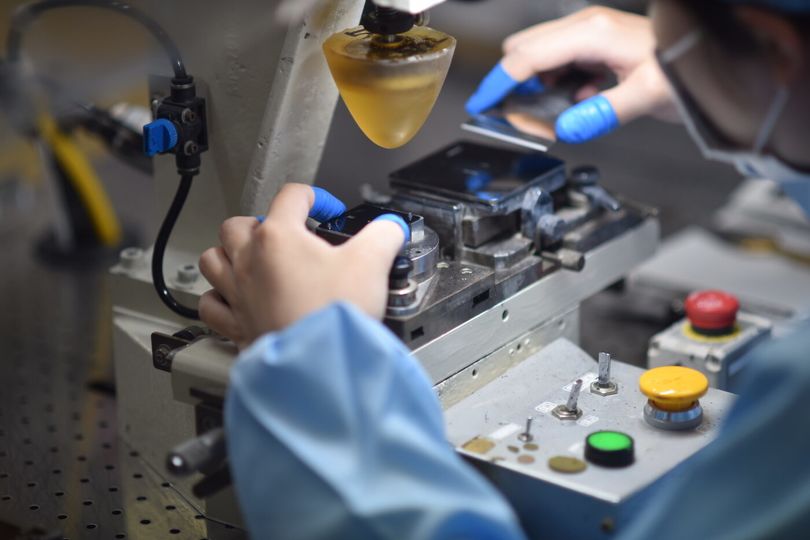
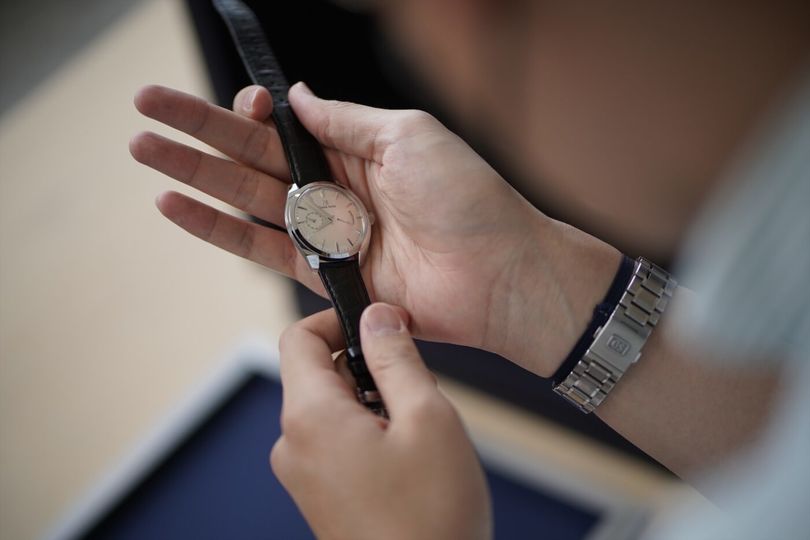
Hi Guest, join in the discussion on A trip to Japan reveals just how amazing Grand Seiko watches are